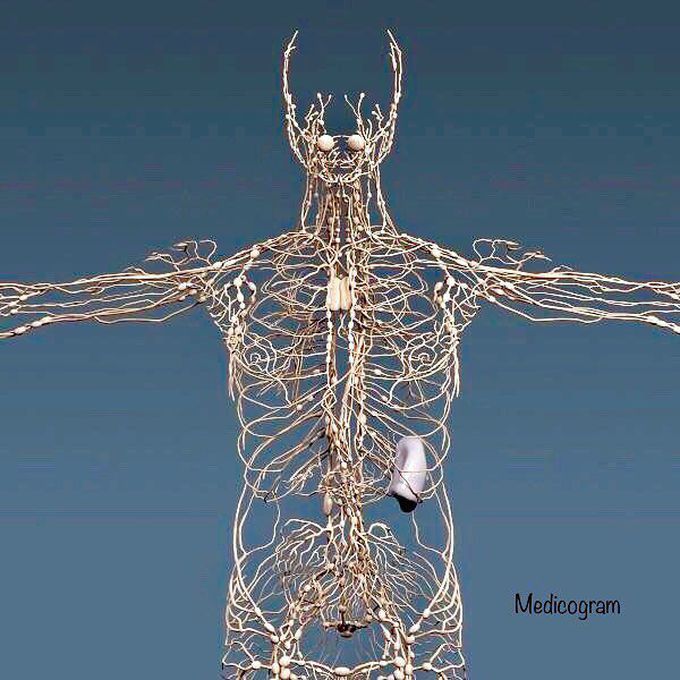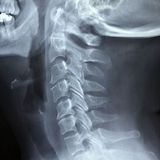


illustration of the infamous lymphatic system
Awesome illustration of the infamous lymphatic system (that every student tries to avoid to learn!) :) But what is it for?The primary function of the lymphatic system is to transport lymph, a clear, colorless fluid containing white blood cells that helps rid the body of toxins, waste and other unwanted materials.Lymphatic comes from the Latin word lymphaticus, meaning "connected to water," as lymph is clear.The lymphatic system, which is a subset of the circulatory system, has a number of functions, including the removal of interstitial fluid, the extracellular fluid that bathes most tissue. It also acts as a highway, transporting white blood cells to and from the lymph nodes into the bones, and antigen-presenting cells to the lymph nodes.The lymphatic system is a network of tissues and organs that primarily consists of lymph vessels, lymph nodes and lymph. The tonsils, adenoids, spleen and thymus are all part of the lymphatic system.There are 600 to 700 lymph nodes in the human body that filter the lymph before it returns to the circulatory system.The spleen, which is largest lymphatic organ, is located on the left side of the body just above the kidney. Humans can live without a spleen, although people who have lost their spleen to disease or injury are more prone to infections.The thymus, which stores immature lymphocytes and prepares them to become active T cells, is located in the chest just above the heart.Tonsils are large clusters of lymphatic cells found in the pharynx. Although tonsillectomies occur much less frequently today then they did in the 1950s, it is still among the most common operations performed and typically follows frequent throat infections.When bacteria are recognized in the lymph fluid, the lymph nodes make more infection-fighting white blood cells, which can cause swelling. The swollen nodes can sometimes be felt in the neck, underarms and groin.Your immune system gets activated and fights off the enemy in order to keep you healthy! Props to our lymphatic system.
Head and Neck Lymph Nodes
🍄 Commonly noticed Triads; Pentads🍚🍚 1. Hutchinson's Triad (congenital syphilis): - Hutchinson's teeth (notched incisors) - Interstitial keratitis - Deafness due to involvement of the eighth cranial nerve 2. Charcot's Triad(for cholangitis): - Jaundice - Fever with chills - Right upper quadrant pain 3. Samter's triad -bronchial asthma -nasal polyps - aspirin intolerance 4. Triad of O'Donoghue (or unhappy triad, often seen in sports injuries, especially knee injuries): - ACL (anterior cruciate ligament) tear - MCL (medial collateral ligament) tear - Medial meniscus tear 5. Beck's Triad (cardiac tamponade): - Distant/muffled heart sounds - Increased jugular venous pressure - Hypotension 6. Saint's Triad: - Gallstones - Diverticulosis - Hiatal hernia 7. Whipple's Triad: - Symptoms of hypoglycemia - Documented low blood sugar - Relief of symptoms after glucose administration 8. Cushing's Triad (seen in increased intracranial pressure): - Hypertension - Bradycardia - Irregular or abnormal respirations 9. Virchow's Triad(risk factors for thrombosis): - Endothelial injury - Stasis or turbulent blood flow - Blood hypercoagulability 10. Triad of Alport Syndrome: - Hematuria - Sensorineural hearing loss - Ocular abnormalities 11. Reynold's Pentad (an extension of Charcot's Triad for advanced cholangitis): - Jaundice - Fever with chills - Right upper quadrant pain - Septic shock - Mental confusionLymph NodesLymphatic Drainage of Head and NeckVirchow's NodeSentinel Lymph NodesLymphomaLymph Nodes Of Head And Neck


